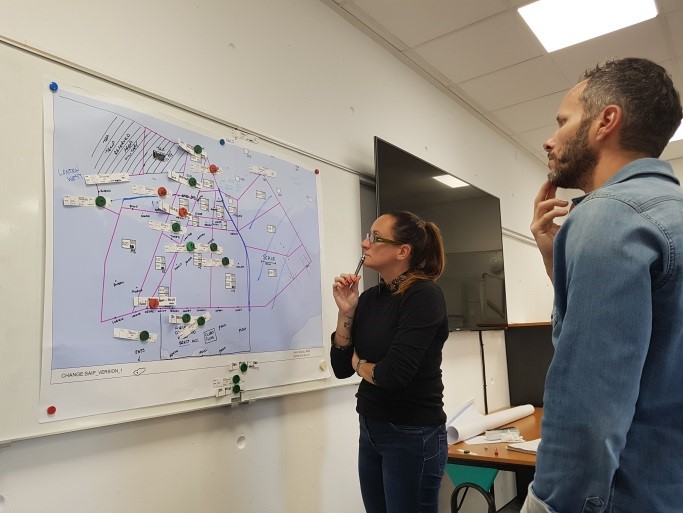SESAR members NATS, skyguide, COOPANS (LFV) and INDRA have conducted an initial validation exercise of a solution, which aims to enable greater flexibility, allowing air traffic controllers to control a particular type of sector in any control centre across Europe.

The solution aims to reduce the cost of ATC service through more flexible rostering, increase the resilience of the service against local disruption (e.g. Centre closure for operational or technical reasons), and reduce delays associated with airspace capacity restrictions which, today, are difficult to mitigate with operational personnel.
The situation today
Today, controllers hold a licence to work a particular type of airspace, either Area, Approach or Tower, and a number of specific sectors. These sectors are geographically specific and refer to particular, defined and published blocks of airspace. The purpose of this concept is to investigate the possibility of removing the current operating method whereby the controller relies on detailed knowledge of a sector, to a more flexible approach where knowledge of the environment is supported by systems and procedures to allow the controller to perform their task based on a sector type, rather than a geographical area.

While sector types are still to be defined – likely to be based on complexity and type and level of traffic – the solution provides a range of applications. Within a Centre or between ANSP’s centres, controllers may work a variety of sectors that have been grouped by type. The solution also creates the possibility for controllers from one ANSP to manage the airspace of another, thereby potentially increasing resilience.
PJ.10-06 work to date
Several pathfinding workshops throughout the summer of 2018 have elicited the need to “move” the airspace, and not the ATCO. In other words, this solution looks at flexible delegation of airspace from one unit to another. Sectors both within units as well as more generically across borders can be controlled from another geographical location, as the ATCO validation is not on the geographic and local knowledge but the systems and sector type. This is the operational part complementing the virtual centre technical solution.
Taking place in October 2018, in skyguide’s Geneva Control Centre, the validation exercise involved controllers from solution members to refine the concept and understand the R&D needs to develop it in preparation for future, higher maturity, validation exercises; identify the expected benefits; and understand the key safety, human factors and procedural issues that would need to be addressed prior to deployment.
Over the course of two days, controllers, working closely with teams from Validation, Safety and Human Factors, used three different validation techniques: real time simulation, paper-based gaming and radar replay to elicit feedback on what support is required to enable a controller to provide a safe and efficient service in an unfamiliar or “generic” sector.
Controllers simulated controlling aircraft in a sector of one of the other ANSPs, acting as a “generic” controller in unknown airspace, supported by an “expert” controller, valid on the airspace in their home Unit, in managing that sector. This was performed using a number of scenarios with low, medium and high density traffic and in runs with and without “expert” support.
In the first scenario, the generic controller was initially given a high-level overview of the airspace and its operation and was then able to ask questions of the expert controller while controlling the traffic as it evolved through the airspace (somewhat akin to a student driver with their instructor). This was followed by a second scenario, set in the same airspace, that the generic controller was asked to control (plan and execute), this time without the help of the expert controller who took more of an assessor role, manipulating the traffic to test the generic controller’s ability to spot and resolve the sector problems (in this case, the expert controller took more of a driving examiner role).
Conversations with the generic and expert controllers, together with the observers, discussed the issues found in each of the three validation approaches and helped deliver a broad range of experiences to gain the maximum benefit from the activity.
The results
The exercise output is a list of areas that are currently linked to the specific knowledge of the sector and need to be either automated or made more generic. These conclusions will be looked at in cooperation with other SESAR solutions, regulation and implementation of standards as the solution progresses in maturity.
Whilst a number of issues remain to be addressed in the next phases of concept development, initial results support the view that the Solution’s direction is one that will lead to beneficial and implementable capability which can be tailored to meet particular ANSP business needs, and which will continue to mature in the next wave of SESAR.
This project has received funding from the SESAR Joint Undertaking under the European Union's Horizon 2020 research and innovation programme under grant agreement No 734143
